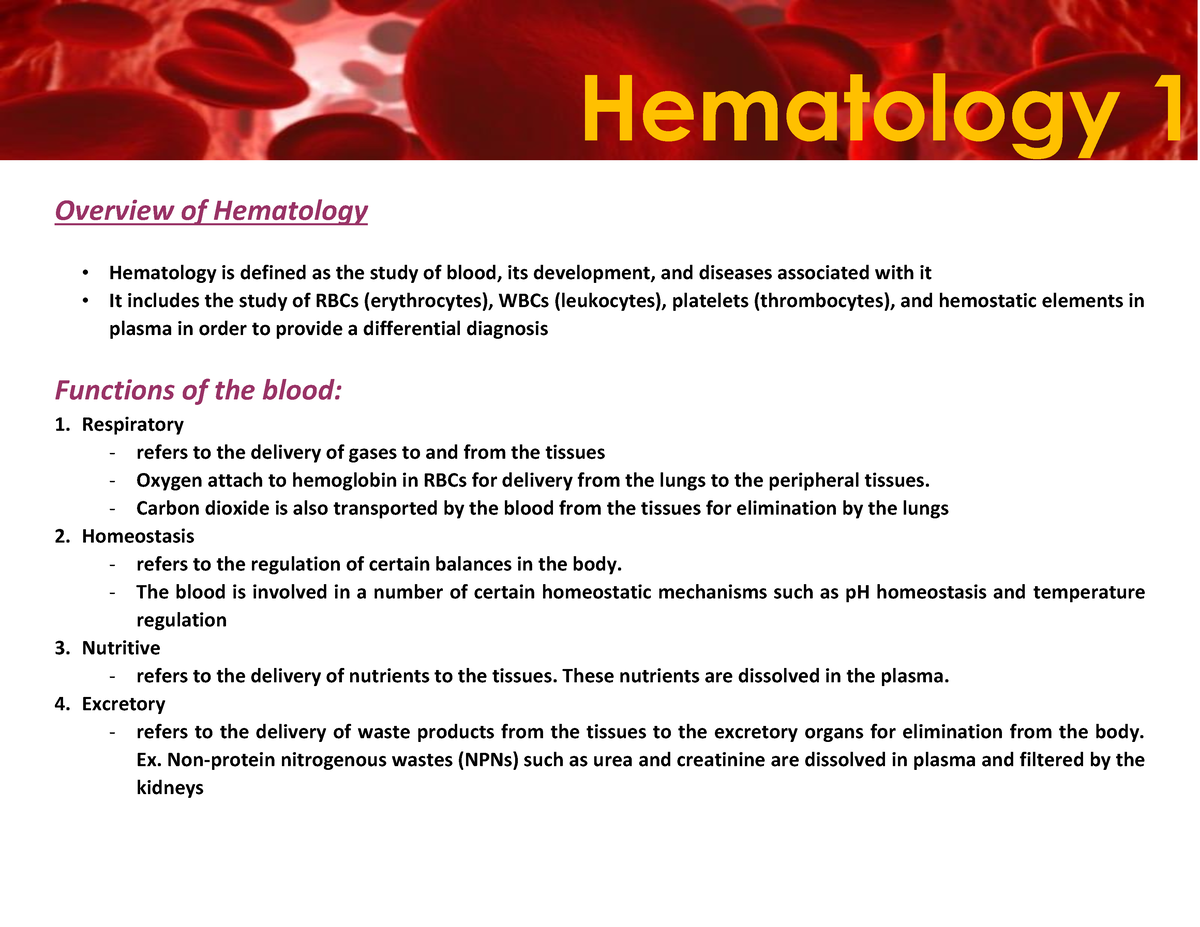Overview of Hematology Hematology is Biology Diagrams Blood is the body fluid in humans and other animals that delivers the essential materials for life to the body's cells. It has sometimes been called a fluid "tissue," because like solid tissues it contains several types of cells which perform complex functions for the human body.

Recall that blood is a connective tissue. Like all connective tissues, it is made up of cellular elements and an extracellular matrix. The cellular elements—referred to as the formed elements —include red blood cells (RBCs), white blood cells (WBCs), and cell fragments called platelets.The extracellular matrix, called plasma, makes blood unique among connective tissues because it is fluid.

Blood: Composition, components and function Biology Diagrams
The pH of blood averages about 7.4; however, it can range from 7.35 to 7.45 in a healthy person. Blood is therefore somewhat more basic (alkaline) on a chemical scale than pure water, which has a pH of 7.0. Blood contains numerous buffers that help to regulate pH. Blood constitutes approximately 8 percent of adult body weight. Blood makes up about 8% of the human body weight. It contains erythrocytes, leucocytes, thrombocytes (platelets) and plasma. The volume percentage of all blood cells in the whole blood is about 45% of adults (hematocrit). The rest consists of liquid plasma (e.g. water, plasma proteins, electrolytes etc.). Learning anatomy is a massive

Dive into the life-giving essence of blood anatomy and physiology. Nursing students, here's your roadmap to understanding the vital river that courses through us, carrying both life and messages. Functions of the Blood. Blood is unique; it is the only fluid tissue in the body. 1. Carrier of gases, nutrients, and waste products.

01: Anatomy & Physiology in Hematology Biology Diagrams
10.4 Anatomy of the Hematology System The hematology system consists of the blood and the bone marrow that create the cellular elements of the blood, as well as accessory organs, including the spleen and the liver. A blood transfusion (blŭd tran-SFŪ-zhŏn) is a procedure that enables the transfer of blood products from one person to another. • Erythrocytes are the major factor contributing to blood viscosity. • When the number of Erythrocytes increases beyond the normal range, blood becomes more viscous and flows more slowly. • When the number of Erythrocytes drops below the lower end of the range, the blood thins and flows more rapidly Erythrocytes count Dr. Naim Kittana, PhD 16 AMA Citation Anatomy & Physiology in Hematology. In: Huppert LA, Dyster TG. Huppert L.A., & Dyster T.G.(Eds.), Eds. Laura A. Huppert, and Timothy G. Dyster. eds. Huppert's Notes: Pathophysiology and Clinical Pearls for Internal Medicine. McGraw Hill; 2021. Normal human hematopoesis. The multipotential hematopoietic stem cell can
